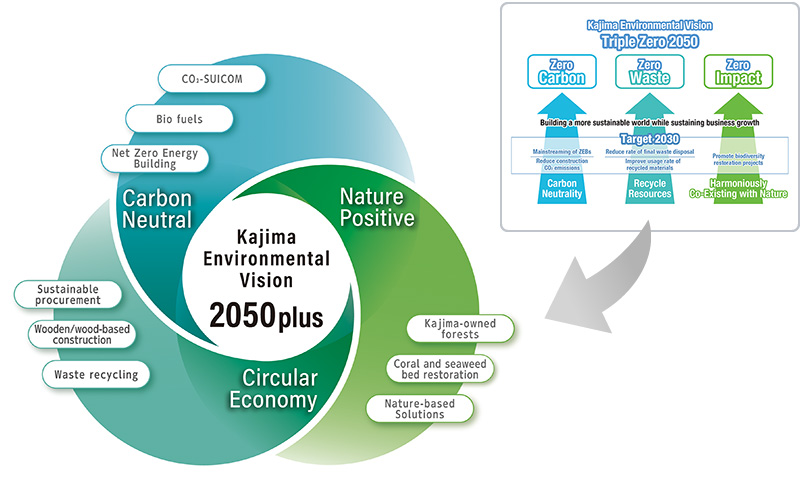Kajima Environmental Vision 2050plus
Background to the Formulation of the Vision
Kajima assesses environmental risks and opportunities in construction operations as follows:
| Carbon Neutral Society |
|
|---|---|
| Recycling Resources Society |
|
| Natural Symbiosis Society |
|
Kajima Environmental Vision 2050plus

The previous environmental vision, established in 2013, was the Kajima Environmental Vision: Triple Zero 2050. It set out carbon neutrality, resource recycling and harmoniously co-existing with nature as the key aspects of a sustainable society and set three goals for Kajima to achieve by 2050: Zero Carbon, Zero Waste, and Zero Impact. This was our vision for the future, and the entire company has been working to achieve these goals.
Recently, however, we have updated the environmental vision, titling it the Kajima Environmental Vision 2050plus. With a new appreciation that the three initiative areas of carbon neutrality, circular economy, and nature positivity are interconnected, involving both synergistic effects and trade-offs, we have reset the Group's goals and action plans.
Knowing that we cannot fully implement the necessary initiatives alone, we have added the word “plus” to the name of the new environmental vision. This signifies our intention to work together with customers and society, and to remain persistent, so that the vision goals can be achieved by 2050. Based on the new vision, Kajima will continue to promote initiatives to help build a sustainable world where economic activity is balanced with environmental conservation.
KPIs and Targets for 2050

1.Targets for businesses by Kajima (non-consolidated) and its domestic group companies
2.Targets for Kajima non-consolidated business
SBT (Science Based Targets)
Kajima acquired SBT certification in July 2023.
